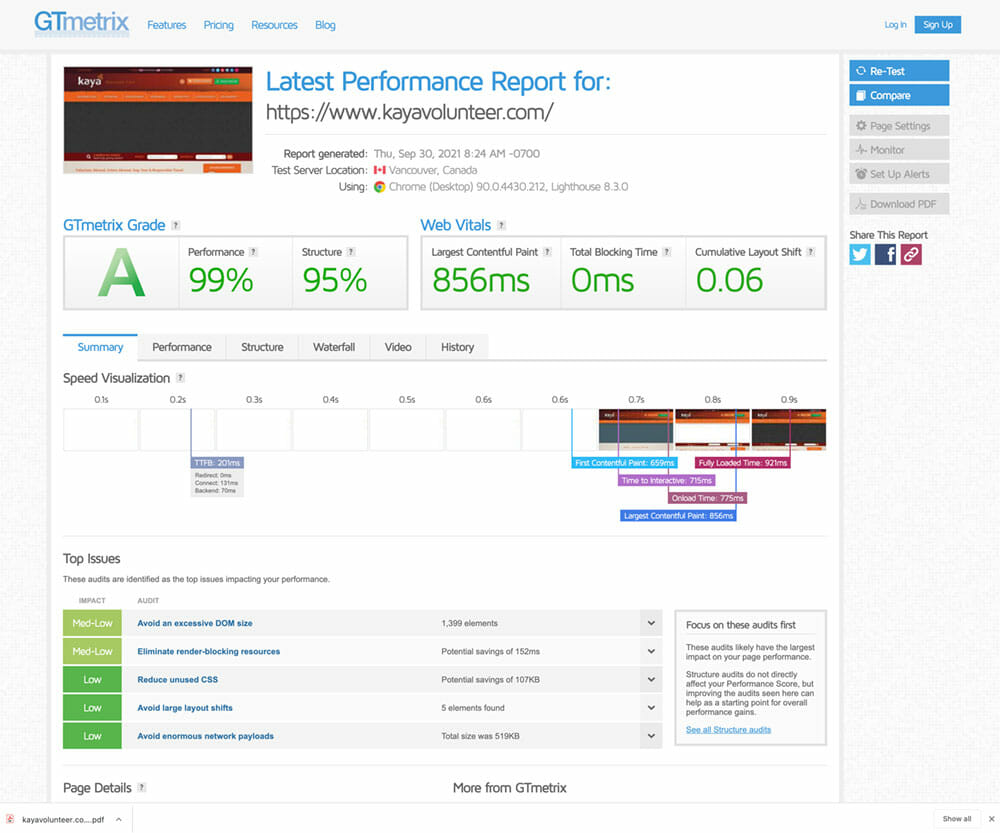As Google and other search engines continue to advance, positive user experience is becoming more and more vital. One example of this change is the page experience update that will be completed by the end of August.
Your website needs to be prepared for these changes if you want to rank well for relevant keyword searches. So, let’s talk about what page experience is and how you can prepare for it.
What Is Page Experience?
Page experience sets aside the content you create and instead focuses on how your page functions for your user. There are currently four components that Google uses to measure page experience:
Core Web Vitals. There are a few things that go into this component, and they are:
- Largest Contentful Paint (LCP) — This refers to how quickly your page loads. To score well here, your page should load in under 2.5 seconds.
- First Input Delay (FID) — When a user clicks on anything on your page, it should begin to process that event in under 100 milliseconds.
- Cumulative Layout Shift (CLS) — Have you ever tried to click something on a page, and at the last second, something new loads and you end up clicking a completely different area? Sometimes, a completely different link? That’s layout shift. For a good page experience score, CLS should be less than .1. (Here’s a resource to help calculate your layout shift score.)
Mobile-Friendly. According to Statista, 54.8% of global website traffic is done on a mobile device. Web pages need to be designed with mobile users in mind to achieve a good page experience score.
Safe-Browsing (HTTPS). A safe and secure platform is absolutely vital for a good page experience. If users think their information is at risk, they will quickly seek out an alternative.
No Intrusive Interstitials. This relates to mobile-friendliness and whether extra steps are required to easily view your content on a mobile device. For instance, if the text on the page isn’t readable without zooming, that will negatively affect your page experience score.
What Does This Mean for You?
The gist of it is that you need to put your user first. Of course, this is something of a golden rule in web page design. However, old SEO tactics would often attempt to “cheat” the system with keyword stuffing, buying backlinks, and other sneaky strategies.
As SEO continues to be a centerpiece for digital marketing, Google and other search engines are learning how to separate these tactics from truly valuable pages that search engine users could benefit from.
There’s no shortcut to creating a page with a good user experience score. You simply have to put in the work to have a well-functioning web page. And it’s so vital that you do. When you spend so much time and resources creating top-notch content, building up an audience, and designing a beautiful web page, you can’t let a good SERP ranking slip through your fingers because of something as simple as slow loading times.
Again, the page experience score will be completely rolled out by the end of August, so now is the time to make any last changes.

In conclusion
SEO is an ever changing area with Google regularly changing the rules…but fortunately for the end user, this is a good thing. We all want better experiences online, and now Google are praising those that provide with better rankings and punishing those that dont, we might just get those enhanced experiences.
If your business depends massively on the online traffic you’ve grown used to, now might be the time to take another good long hard look at your business and how it performs online.
For more information please connect with us or read more about our SEO services here.


